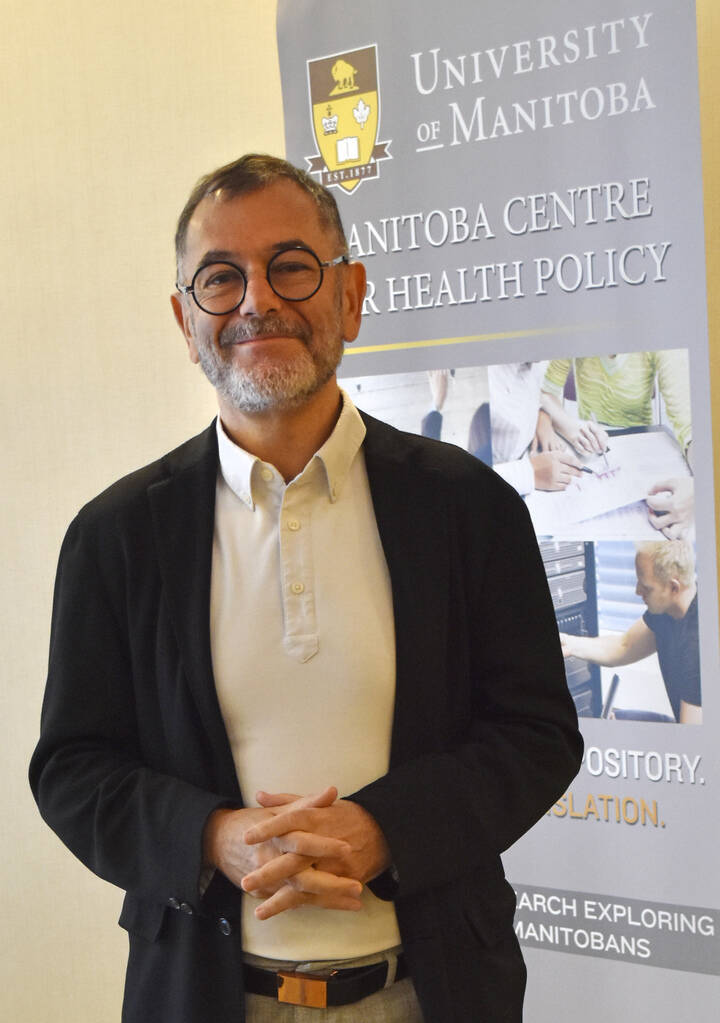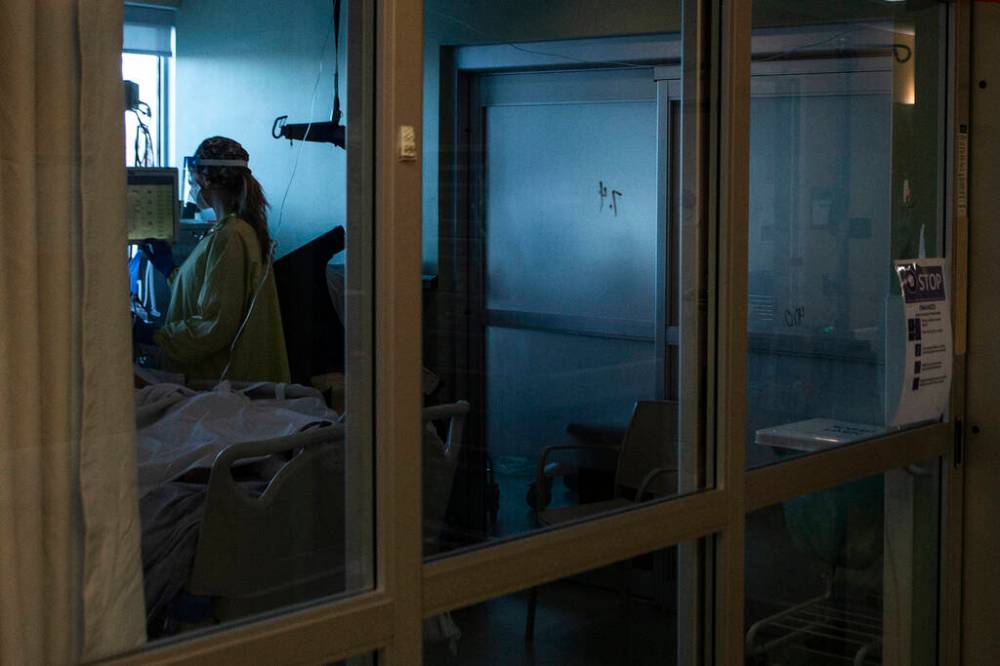Tabulating long-term impact of long COVID
Read this article for free:
or
Already have an account? Log in here »
To continue reading, please subscribe:
Monthly Digital Subscription
$0 for the first 4 weeks*
- Enjoy unlimited reading on winnipegfreepress.com
- Read the E-Edition, our digital replica newspaper
- Access News Break, our award-winning app
- Play interactive puzzles
*No charge for 4 weeks then price increases to the regular rate of $19.00 plus GST every four weeks. Offer available to new and qualified returning subscribers only. Cancel any time.
Monthly Digital Subscription
$4.75/week*
- Enjoy unlimited reading on winnipegfreepress.com
- Read the E-Edition, our digital replica newspaper
- Access News Break, our award-winning app
- Play interactive puzzles
*Billed as $19 plus GST every four weeks. Cancel any time.
To continue reading, please subscribe:
Add Free Press access to your Brandon Sun subscription for only an additional
$1 for the first 4 weeks*
*Your next subscription payment will increase by $1.00 and you will be charged $16.99 plus GST for four weeks. After four weeks, your payment will increase to $23.99 plus GST every four weeks.
Read unlimited articles for free today:
or
Already have an account? Log in here »
Hey there, time traveller!
This article was published 07/02/2022 (1400 days ago), so information in it may no longer be current.
Throughout a career dedicated to health research, Dr. Alan Katz had never seen anything like it.
In fall 2021, it was announced the Manitoba Centre for Health Policy (which Katz leads) had been awarded a grant to study “long COVID-19,” the name given to the prolonged suffering experienced by people who contracted, and survived, the novel coronavirus.
Soon after the news broke, Katz said something extraordinary happened: he started getting direct calls from people who believed they were suffering from long COVID, and who wanted to participate in the study.

“I’ve done research for a long time and I’d never seen anything like it before,” he said.
Katz informed callers his research does not rely on data from a small control group of COVID-19 survivors. He and his team are working urgently to analyze years of anonymized data across the Manitoba health-care system.
In other words, using anonymous health data on literally everyone who has ever used the health-care system to search for the impact of long COVID.

The data includes basic demographic information: age, sex and the first three letters of the postal codes of home residence. In terms of medical history, Katz has access to details on underlying health conditions, diagnosis, disease treatment (including surgical interventions) and pharmaceutical history.
Put all the data together, and run it through an algorithm designed to flag markers of patients that contracted COVID-19, and Katz hopes to come up with clearer picture of how many people are suffering from long COVID, how serious their symptoms are, and perhaps, how long the syndrome can be expected to last.
“Getting population data on how many people are affected will help us determine future demands on the health-care system,” Katz said in an interview.
“Getting population data on how many people are affected will help us determine future demands on the health-care system.” – Dr. Alan Katz
Despite a lack of profile in the general public, the idea COVID-19 creates serious, long-term health implications is not really in dispute among those working on the front lines of the pandemic and in pandemic-related scientific research.
Researchers have already established many COVID-19 survivors — including otherwise healthy people with no clear underlying health concerns — continue to suffer from a broad array of symptoms long after the virus has departed.
There are those who suffer from a lack of respiratory capacity (shortness of breath). Some suffer from a loss of smell. Others have experienced a dip in cognitive function or reported heart problems.
And there is what researchers believe to be a large but undefined population that has been afflicted by what appears to be chronic fatigue syndrome, a mysterious condition that has no known cause or treatment.
How many people suffer from long COVID, and how long do their symptoms last? This is, in part, what Katz and his team are trying to determine with an unprecedented deep dive into Manitoba health data.
How in the world will the system respond to all the backlogs created by the pandemic if, at the same time, it is trying to treat new cohorts of people with serious and long-term health problems?
It is impossible to overstate the impact the findings of this research could have on the political and public health debates over COVID-19 and future pandemics.
In the current battle over social and economic restrictions, the issue of long COVID continues to live largely in the shadows, well out of the view of protesting truckers, stubborn anti-vaxxers and skittish politicians. Mostly as a result of pandemic fatigue, these factions have already decided it’s possible to “live with the virus” without any serious, long-term consequences.

Incontrovertible scientific data showing the magnitude and severity of chronic symptoms would turn that assertion on its head, and redefine what we mean by “learning to live with the virus.”
It could also completely reframe the debate around health-care funding and reform.
The pandemic has brought certain parts of the health-care system — priority elective surgery and diagnostic procedures in particular — to its knees. The system as configured and funded now simply cannot keep up with the sheer number of seriously ill COVID-19 victims.
How in the world will the system respond to all the backlogs created by the pandemic if, at the same time, it is trying to treat new cohorts of people with serious and long-term health problems?
How many people suffer from long COVID, and how long do their symptoms last? This is, in part, what Katz and his team are trying to determine with an unprecedented deep dive into Manitoba health data.
The awful truth is we will never have a system that can do all that.
That is why, before we start dismantling social and economic restrictions or mask mandates, we need to know exactly how big a problem we’re facing. We won’t know that until we have a better handle on the long-term effects.
It’s important to note the scientific narrative has always insisted COVID-19 is nothing like seasonal influenza. And further, there is no evidence it will become less virulent as it mutates. Although that’s possible, it’s certainly not probable yet.
The current pandemic may ease in the near future. But we won’t know if we can truly live with the virus until we figure out how long the consequences from this virus will live on in all of us.
dan.lett@freepress.mb.ca

Born and raised in and around Toronto, Dan Lett came to Winnipeg in 1986, less than a year out of journalism school with a lifelong dream to be a newspaper reporter.
Our newsroom depends on a growing audience of readers to power our journalism. If you are not a paid reader, please consider becoming a subscriber.
Our newsroom depends on its audience of readers to power our journalism. Thank you for your support.










